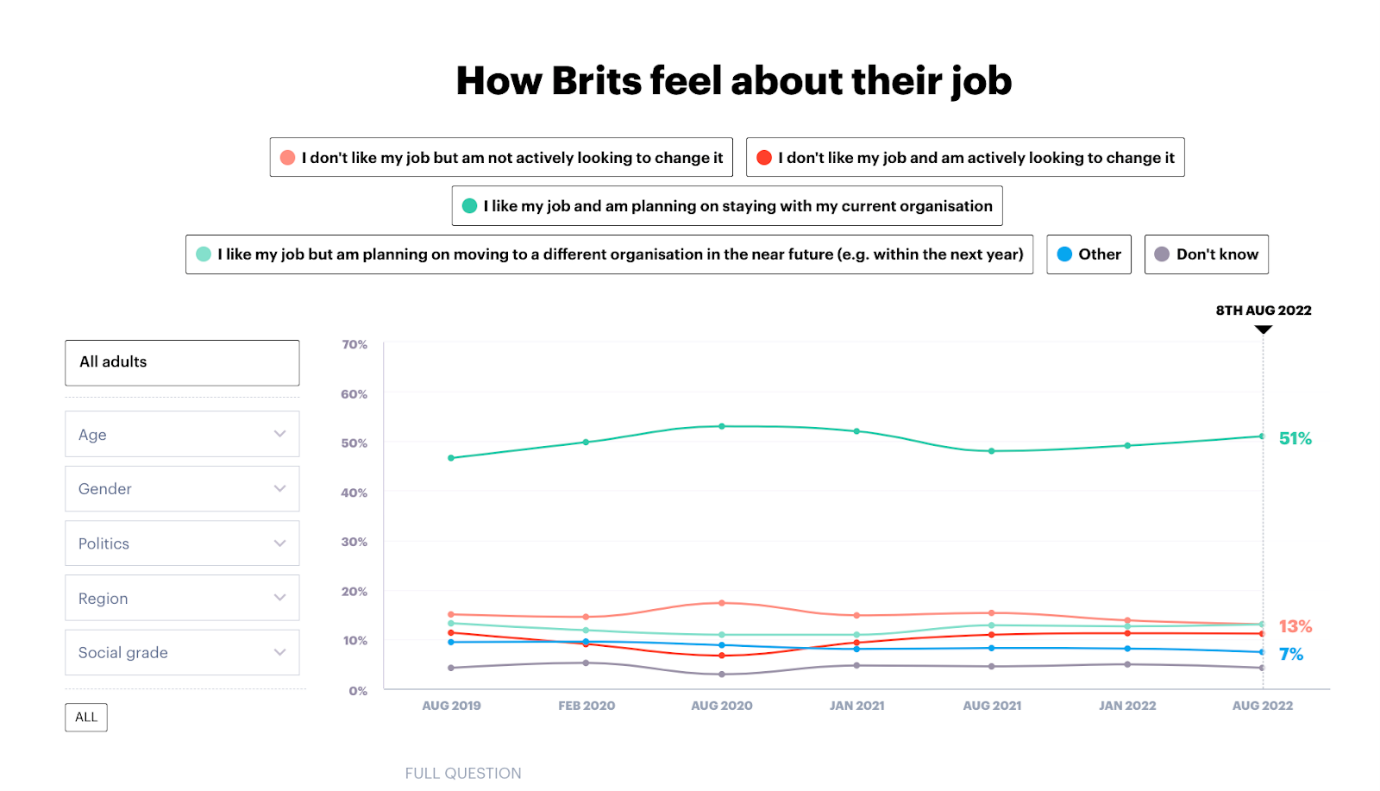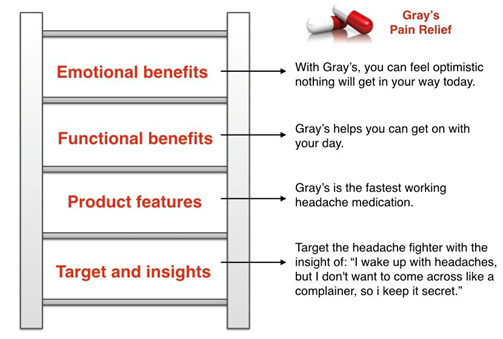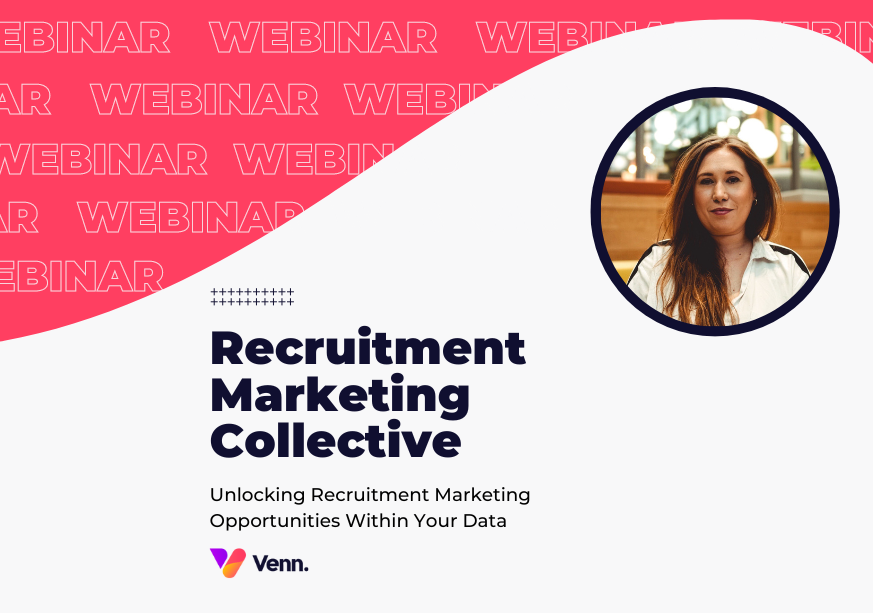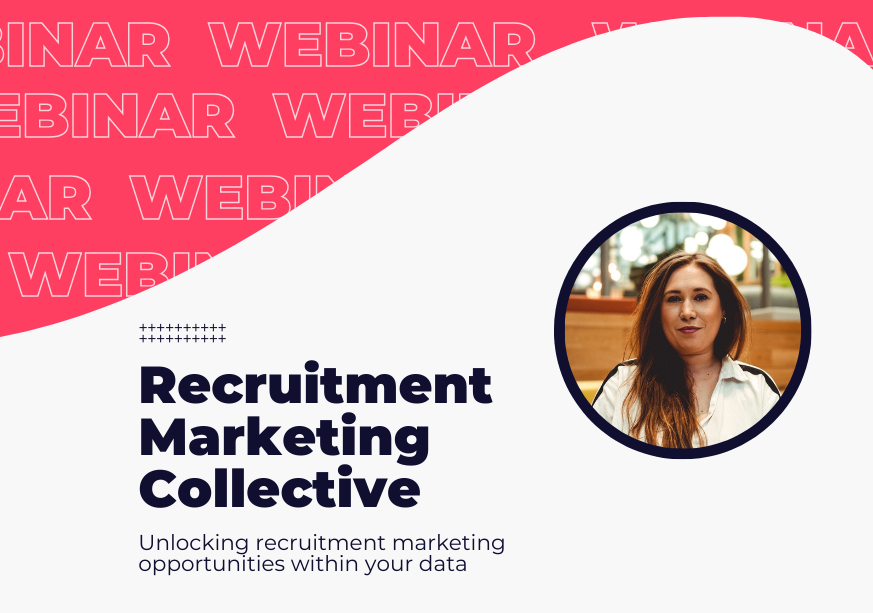Explore our NEW Knowledge Base and Help Desk to find everything you need to attract, engage and convert talent with your Vennture website.
Discover MoreJob Boards Are Dead, but What is the Alternative?
19 Oct, 20227 minutes
It is often said the best candidates are on the market, not in the market. Job boards hold masses of active job seekers, with thousands of candidates registering their CVs. However, in a talent-short climate, most are in jobs and not actively searching on job boards, enter headhunters.
Highly-skilled recruiters specialising in talent acquisition for your industry. What's the catch? With the rising cost of job boards and expensive recruiter salaries, finding talent just got a whole lot more expensive.
Aggregator sites have changed user behaviour across all industries, from car insurance to house hunting, providing a central place for comparison and data from multiple sources. People are impatient and don’t want to do the same search on several websites—Yay for candidates; not so great for recruiters and recruitment agencies.
We repeatedly hear the same frustrations from recruiters, that job boards result in poor quality CVs and outdated profiles. So what’s the alternative to job boards and headhunting, and how can you invest in a talent acquisition strategy that delivers?

YouGov data shows that 13% of the UK workforce don’t like their job but are not looking to change! So how do you tap into this talent pool and reach these candidates?
Your secret weapon; recruitment marketing teams. The creative bunch… powered mainly by coffee and chocolate, but they know a thing or two about reaching audiences and getting people to engage with adverts. So I’d suggest grabbing some form of sweets/chocolate and strutting over to discuss using digital to create a talent pipeline.
5 steps for successful candidate attraction campaigns
Before starting any recruitment marketing campaign, grab your audience personas for your candidates. If you don’t have them, ask yourself WHO is the perfect candidate? You really need to get under the skin of your ideal candidates to be able to tap into their way of thinking.
Your consultants are KEY to getting this information, no one will know your target audience better than them, and we’re not just talking demographics or job titles. You need to understand their motivations, barriers & aspirations.
1. Brand
Decide your “reasons to believe.” Great recruitment marketing is about tapping into emotion; why would someone choose your brand over your direct competitors? Go back to your audience's personas, think about what they are trying to achieve, and let this inform your campaign messaging.
Consider the following:
- What is your brand reputation?
- How well-known are you in the market?
- Why would someone trust you with their career?
Check your reviews. If you have 1* on Glassdoor, any hard work you do towards a campaign may be in vain. People trust people, so employee reviews and ratings go a long way when it comes to attracting candidates and helping talent make career decisions.
2. Destination
Ok, so you’ve got a great brand, and your past candidates rave about you online. The next step to consider is WHERE and how the candidate will convert. Where do they go to be inspired and tell you they are interested?
I’ll tell you what’s not going to inspire action, a job search page. Or a boring page with a CV upload form on it. Why? Because if they’re not actively looking for a job, their CV probably isn’t up to date. Also, their chances of seeing the perfect job ad, with the right salary, in the right location in the top 3 on that list is an impossibility. Finally, if your recruitment agency website looks outdated and is difficult to use, they’re unlikely to reach out.
3. Conversion
So we touched on this slightly at the destination, but now is the time to focus on HOW you want candidates to get in touch. When it comes to talent acquisition, engaging and attracting users is an art. Too many barriers and you’ll put a user off, not enough opportunities to get in touch, and users could drop off.
Consider the following:
- Do you really need a CV?
- Is it as simple as a conversation starter?
- Will a link to their LinkedIn profile do?
- Can they book a call with something like Calendly?
Try and use a range of Calls to Action; Register with [Your Brand], Create an Account, Register for Job Alerts, Submit your CV, Speak to a consultant… the list goes on. Give users a range of options but be mindful not to overwhelm them.
4. Convincing
If you want to attract passive candidates (who aren’t on job boards), what more do you have to offer? Remember! They don’t want a new job; that’s why they’re not on job boards, so what else are you offering in exchange for data capture?
As part of your recruitment marketing strategy, you should create content that proves your expertise. Whether this be case studies, testimonials, or insights pieces, this content serves an important purpose when potential candidates are comparing your brand with another.
Consider the following:
- Do you have a candidate referral scheme in place?
- Why would someone register with your recruitment agency?
- Are there any resources for users to download?
- Revisit your audience personas; what do your candidates want?

Giving the right message is crucial. Look at the example above. All of these are relevant to different potential buyers with different pain points. How can you apply these to your service or offering? Using this variety of messaging in your campaigns & landing pages will help you resonate with your audience.
5. Communicating
Ok, so you’ve got a great brand and excellent reputation, with a 5* recruitment website and an attractive offering, you’re ready to go to market! There are so many channels to explore, and which ones will work again depends on your audience personas.
YouTube, Facebook, Instagram, LinkedIn, TikTok, Email
Marketing, Medium, Reddit, Podcasts, Out of Home billboards (Yep, Google
owns the out-of-home space now too). But every channel needs great content, so let's tackle that first.
How to use Content marketing for talent acquisition
Content marketing has been around for years now… but there are few who produce content strategically as part of their recruitment marketing strategy, and many contribute to almost deafening white noise across various platforms. A strong content strategy will maximise your social & email channels, re-engaging with dormant contacts and staying top-of-mind for recently placed candidates. Your content should be thought-provoking and a conversation starter.
Create content that matters. Let’s be honest; there are only so many times people can read the same tips about standing out and proofreading your CV. Before you hit publish, does it fall into one of the below categories?
- Is this piece educational?
- Is this piece of content engaging? Will it inspire/start a conversation?
- Is this piece of content empowering?
- Is this piece of content entertaining?
Go beyond words. Take a simple blog, add a short interview segment, a video embed, and some supporting graphics to make it stand out. Guest post and collaborate! Reach new audiences on different channels by working with influential people in the industry.
Tools such as Trint allow you to record interviews and
transcribe conversations. With this, you can share valuable content from a
range of sources within your industry. This could be an interview with a
leading HR manager or influential speaker within your sector/specialism.
Planning guest pieces like this will give your brand and content credibility
and help you share a wide range of opinions. Support these written pieces by
embedding a video on your web page and build authority with author bios to show
your expertise.
Distribution: What happens after you hit publish? Embed existing content into new guest posts, and repurpose and package your content into snippets for social. Comment on any relevant Reddit threads, share on social and don’t forget to mail it out to your database and seed it into your communities.
Building communities in recruitment marketing
Beyond the buzzword, building successful communities can have excellent benefits for your brand and reputation as a specialist recruitment agency. The University of Michigan looked at the relationship between online communities and sales and found that customers spent 19% more after becoming members of a brand’s online community.
Building an online community of highly skilled candidates in your industry nurtures your very own talent pool, attracting and engaging like-minded people. LinkedIn groups, Facebook groups, and WhatsApp chats immerse yourself in your candidate's world and learn from them.
Not for the fainthearted, these communities will give you unfiltered feedback, but this is where you can truly make a difference to your team by giving your candidates an unrivaled experience.
Communities offer unlimited content ideas. First, listen to how they talk about their problems and challenges. Then, use this to inform your ads' tone, content, and messaging to speak directly to your audience in a way that resonates.
2 ways to get more out of your CRM data
Your CRM is one of the most valuable tools in your recruitment marketing toolkit. Thousands of email addresses of potential candidates in your very own talent pool who are already familiar with your brand.
Email Automation
How many candidates in your CRM applied for jobs, were qualified, categorised, and even evaluated but didn’t make the final placement? Re-engaging your existing talent pool can be a quick win when it comes to talent acquisition.
Cleaning up your data and building a segmented audience
helps you target candidates and clients more effectively. Old data is not only
unhelpful, but it could damage your reputation and GDPR compliance. If you’re
not reviewing your database, cleaning old emails, and unsubscribing users, your
consultants, could reach out to the wrong people.
Most CRMs have automation you can integrate with; Herefish (part of Bullhorn) has preset candidate engagement automation. First, think about your messaging; what do you want to say to this group of candidates? Is it a data-led salary guide or your latest hot jobs? Once the approach is nailed, work with the consultants to refine the messaging and set the actions from the workflow.
Lookalike Audiences
You can use your existing CRM to build audiences for paid advertising based on your ‘ideal candidates.’
“A Lookalike Audience is a way your ads can reach new people who are likely to be interested in your business because they share similar characteristics to your existing customers.” - Meta
Meta recommends an existing audience of between 1,000 and 5,000 members to build your lookalike audience. Generally, the bigger, the better, although the quality is important if you want to attract high-quality candidates. Twitter, LinkedIn, and even TikTok can build lookalike audiences, and Google even has similar audiences for search based on remarketing lists. The principles are the same; the algorithms use data such as demographics, interests, and behaviours to find new people who share similar qualities. To set up these lookalike audiences, head to your Google ads account and go to ‘Audiences’, then select ‘Remarketing and Similar Segements.’ Here you can browse and select the type of list you're looking to target.
Types of paid channels for talent acquisition
Paid media can be a great method to access new audiences across various channels, especially if job boards are not proving fruitful you may find better quality for cheaper CPA.
There are many forms of paid ads across the web, but when it comes to recruitment, we find the best and most targeted results come from the following channels when coupled with powerful messaging and supporting graphics.
Google Display Network (GDN)
GDN allows you to work with websites that your candidates visit when browsing online. As well as the usual demographics, you can also target based on:
In-Market Audience - Employment
Users in this audience have taken specific actions across Google's products (i.e. Google for Jobs) and partner websites to signal their intent as a job seeker.
Topics & Affinity Interests
Affinity audiences reach users based on what they're passionate about and their habits and interests. You might find some interesting data on this in your own analytics.
Looking at this website below, they are a leading graduate recruiter. We can see that their top 5 affinity interests are below based on the volume of job applications. This can help inform messaging, third-party campaigns, or even incentives. Perhaps this brand could offer a 3-month Netflix or Spotify subscription as a perk or incentive?

Find out yours… go to Analytics > Audience > Interests > Affinity Category.
LinkedIn Targeting
Despite many rumours of decline, LinkedIn is still one of the most popular recruitment marketing tools. The platform had 822 million registered users in Q1 2022 and is still the most prominent social network for professionals.
LinkedIn has the most detailed career data on its users, making it a powerful tool for niche targeting. LinkedIn enables targeting based on Function, Seniority, Title, Skills & Years of Experience. Combining these gives some powerful capabilities. Recruitment agencies can target by Function & Seniority to reach decision-makers with a specific expertise. Recruitment agencies can target Function & Seniority to reach decision-makers with specific expertise.
Tackling the rising cost of job boards with recruitment marketing
Like everything right now, the cost of job boards is rising, and recruitment agencies must quickly adapt to maintain candidate levels without breaking the bank. But, don’t panic; beyond job boards, many channels and strategies can be put in place, helping you to use your marketing spend more wisely. Whether it's a more effective use of your CRM or exploring a new candidate attraction campaign, the age of relying on job boards is over, and it's time to get creative.
If you’re looking for inspiration, support, or recruitment marketing services, reach out to our team of experts. Our strategists are always on hand to discuss your challenges and help you meet your marketing goals.



